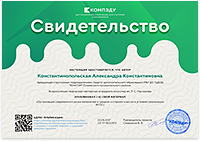Открытый урок в 7 классе «Правила поведения в бассейне» по УМК
Spotlight 7. (В. Эванс, Д. Дули, О. Подоляко, Ю. Ваулина. Издательство «Просвещение». Модуль 6)(Использование технологии критического мышления в обучении, который соответствует требованиям ФГОС нового поколения)
Тема урока: Правила поведения в бассейне. Безопасное поведение на воде.
Цель: Изучить правила поведения в бассейне, создать проектную работу.
Задачи:
1. Перенос активного лексико-грамматического материала в новую ситуацию речевого общения на основе личного опыта и межпредметных связей.
2. развитие умения прогнозировать содержание текста с вербальными и невербальными опорами.
3. развитие умений просмотрового чтения и умения прогнозировать
содержание текста по заданному началу.
4. развитие умений поискового и изучающего чтения
5. развитие умения делать сообщение на основе прочитанного с опорой на тезисы.
6. повышение общей культуры учащихся.
Оборудование: учебник.
Актуальность: Sport is fun and it is so good for your health. And the health of children is the main question in our country. The activities at the Physical Education classes should be safe, not dangerous for pupils.
Ход урока:
Начало урока.
1.Приветствие
Т: Good morning, children!
T: It’s nice to see you again! Take your seats, please!
Please, guess “What are we going to talk about at this lesson?
Ch: We are going to talk about sport, swimming pool, how to swim, how to behave in the swimming pool.
T: You are quite right. The topic of our lesson today is” The rules for the swimming pool.”
Целеполагание
T: So, What do you think what the aim of our lesson is? What must we do at the end of the lesson?
Ch: We must prepare a leaflet how to behave in the swimming pool.
T: That’s OK. Let’s start our work.
Практическая часть
Речевая зарядка:устно
1. Do you like to swim?
2. Are you a good swimmer?
3. Where can you swim in summer?
4. Where can you swim in autumn, winter and spring?
5. Do you often go to the swimming pool?
6. Do you like to dive?
7. Can you swim with your eyes open?
8. What styles of swimming do you know? ( krol, breaststroke, butterfly, dolphin, swimming on the back )
9. Swimming is useful, isn’t it?
10. Do you know about safety rules in a swimming pool?
Работа с текстом: устно
1.
T: So, Look at page 63. What is the title of the text?
Ex. 1 p.63 How are the pictures related to the title of the text? Are they about swimming in the sea/ pool?
Ch: The pictures are related to the swimming pool and show rules at the pool.
2.
T: Now read the introduction of the text What is it about?
Ch: The introduction says that the swimming pool is a great place, but it can also be dangerous.
T: What do you expect to read in the rest of the text?
Ch: The rest of the text gives the dos and don’ts of swimming in a swimming pool.
3.
Введение новых слов:
T: Look at the screen. Using the text translate the words. Письменно, запиши слова:
A lifeguard – one employed to rescue bathers in difficulties
To slip – to get out of position accidentally, to lose one’s control
To push – to press forward
Stomach cramps – a belly spasms
To get into trouble – to make pains, to put oneself to inconvenience, problems
Sign – a signal, a symbol, an emblem
Designated areas – to show, to mark, to name a special place
Display – printed in prominent letters
Safe and sound – free from danger
Safe-guard– protection
4.
Ex.3 p. 63
T: Listen to the text and match the headings (A-H) to the rules (1-7). There is one extra heading. Listen and check.
a. Don’t swim after eating
b. Follow the rules
c. No glass bottles
d. No diving
e. Don’t run
f. No diver bombing
g. Obey the lifeguards
h. No pushing.
Text “Safe Splashing”
When it comes to sporting activities, swimming in the pool can be great exercise but also very dangerous. This simple guide will show and explain the rules you need to follow in and around water.
1. Do not play or run around the pool. The surface is wet and you might slip.
2. YOU probably know how to swim, but some people DON'T. Do not push anyone in because you can put them in danger.
3. You shouldn't eat before swimming because it can lead to stomach cramps and a risk of drowning.
4. Make sure you know where the lifeguards are and call them if you get into trouble. They are there to save lives so always do what they say.
5. Always pay attention to the NODIVING signs around the pool. ONLY dive in designated areas.
6. NEVER jump in like this! Dive-bombing can be a lot of fun but it can also put other swimmers in a lot of danger.
7. All pools have rules displayed on signs around the pool. Always read them before you start swimming. They are there to make sure you stay safe. Enjoy splashing!
Ch: 1- picture C - Don’t run
2 - picture G - No pushing.
3 - picture D- Don’t swim after eating.
4 - picture B- Obey the lifeguards.
5 - picture E- No diving
6 - picture A- No dive- bombing
7 - picture F- Follow the rules
Проектная деятельность
T: It’s time to do the project. Ex. 4 p.63. You should write down the rules for the children how to behave in the swimming pool. We’ll work in groups. Imagine you are a lifeguard in the swimming pool. Use the modal verb should/ shouldn’t
The first group: How to prepare for the activity in the swimming pool.
Ch:
You should prepare for the classes in the swimming pool. .
You should have a swimsuit and a rubber cap.
You should have a towel, soap and a washcloth.
You should have indoor shoes an extra bag.
You should have rubber slates.
You should follow the instructions of a lifeguard.
You should follow the timetable.
You should use only soap for washing.
You should take a shower before swimming.
The second group: What should you do in the swimming pool?
Ch:
You should obey the lifeguards.
You should follow the rules.
You should walk on the wet surface in the swimming pool.
You should be very attentive in the water.
You should read the rules.
You should dive only in designated areas.
The third group: What shouldn’t you do in the swimming pool?
Ch:
You shouldn’t swim after eating.
You shouldn’t dive.
You shouldn’t run on the wet surface .
You shouldn’t dive- bombing.
You shouldn’t push anyone.
You shouldn’t jump.
You should not touch other children in the water.
T: Make notes from the text. Use your own notes to prepare a leaflet for the children at the pool.
Защита проектов (выполнить проект-буклет с рисунками о безопасности в бассейне
T: Thanks for your presentations. I’m very pleased with them.
Рефлексия
T: Now complete the sentences with your own ideas.
1. Today at the lesson I have learnt about ……(the rules in the swimming pool, the rules of behavior in the water, the dangerous moments if you are not follow the rules)
2. Now I know how to………( behave in the swimming pool, follow the rules, swim in the swimming pool, be safe, not to get into trouble, not to put myself and other children in danger)
3. Now I can……( explain the rules to other students, speak about the dangerous situations in the swimming pool0
4. I will use these rules…….. ( at the Physical Education classes, at the lessons in the swimming pool , teach others to follow the rules)
5. It was …..to work in groups.(interesting, boring , difficult )
Подведение итогов урока
T: I do hope you will follow these rules yourselves and teach others to follow them.
Home task: learn the words by heart, выучить новые слова





